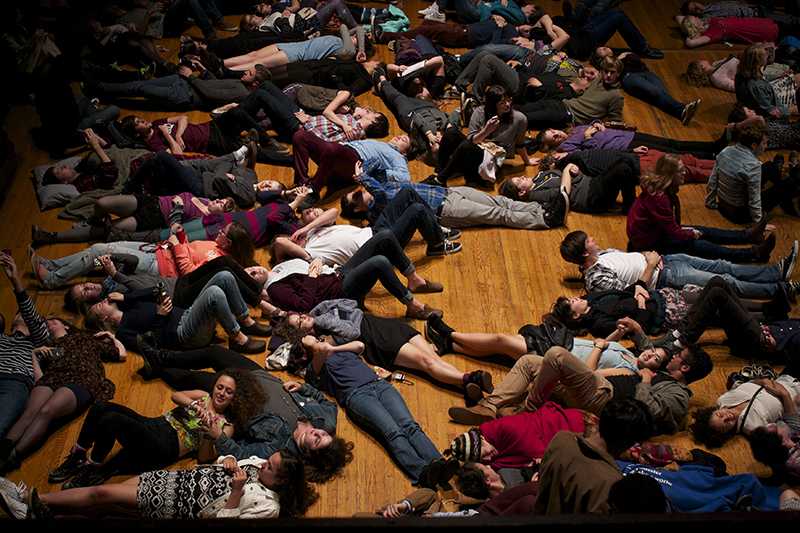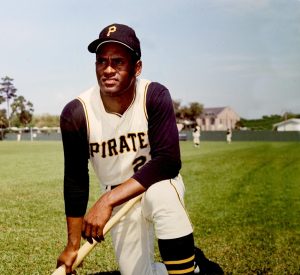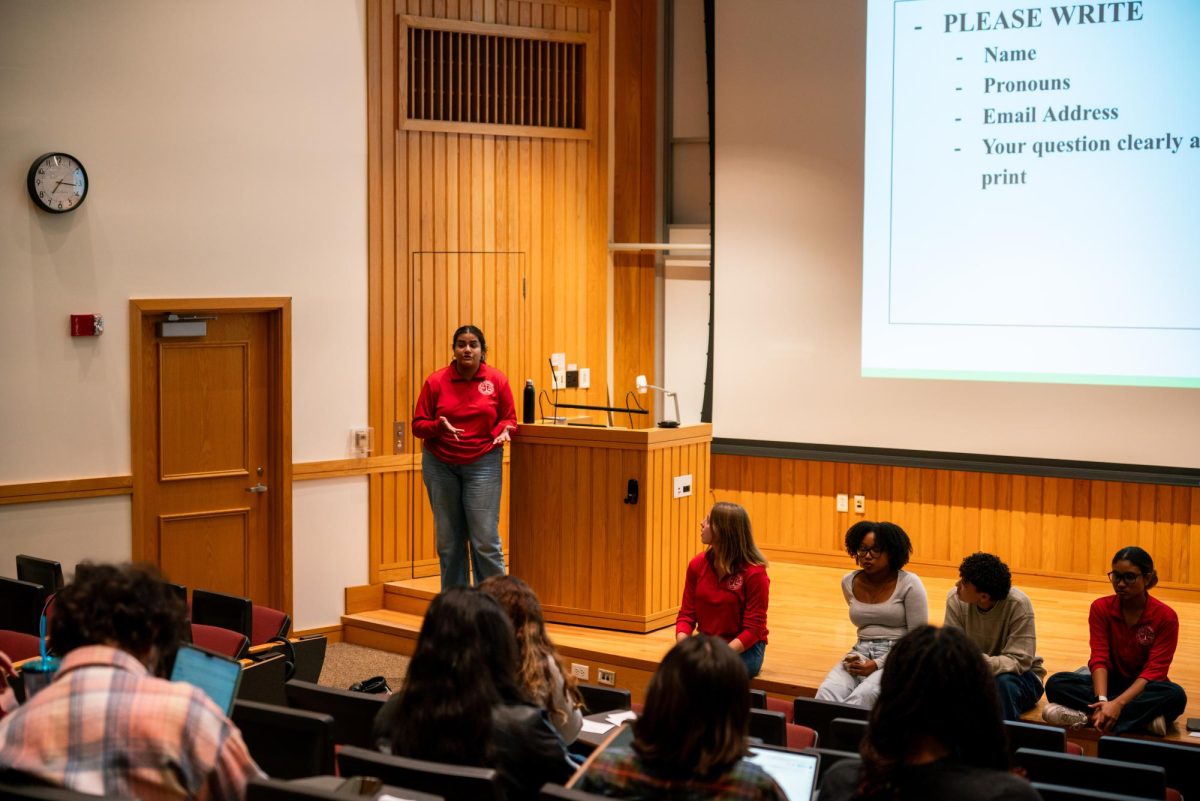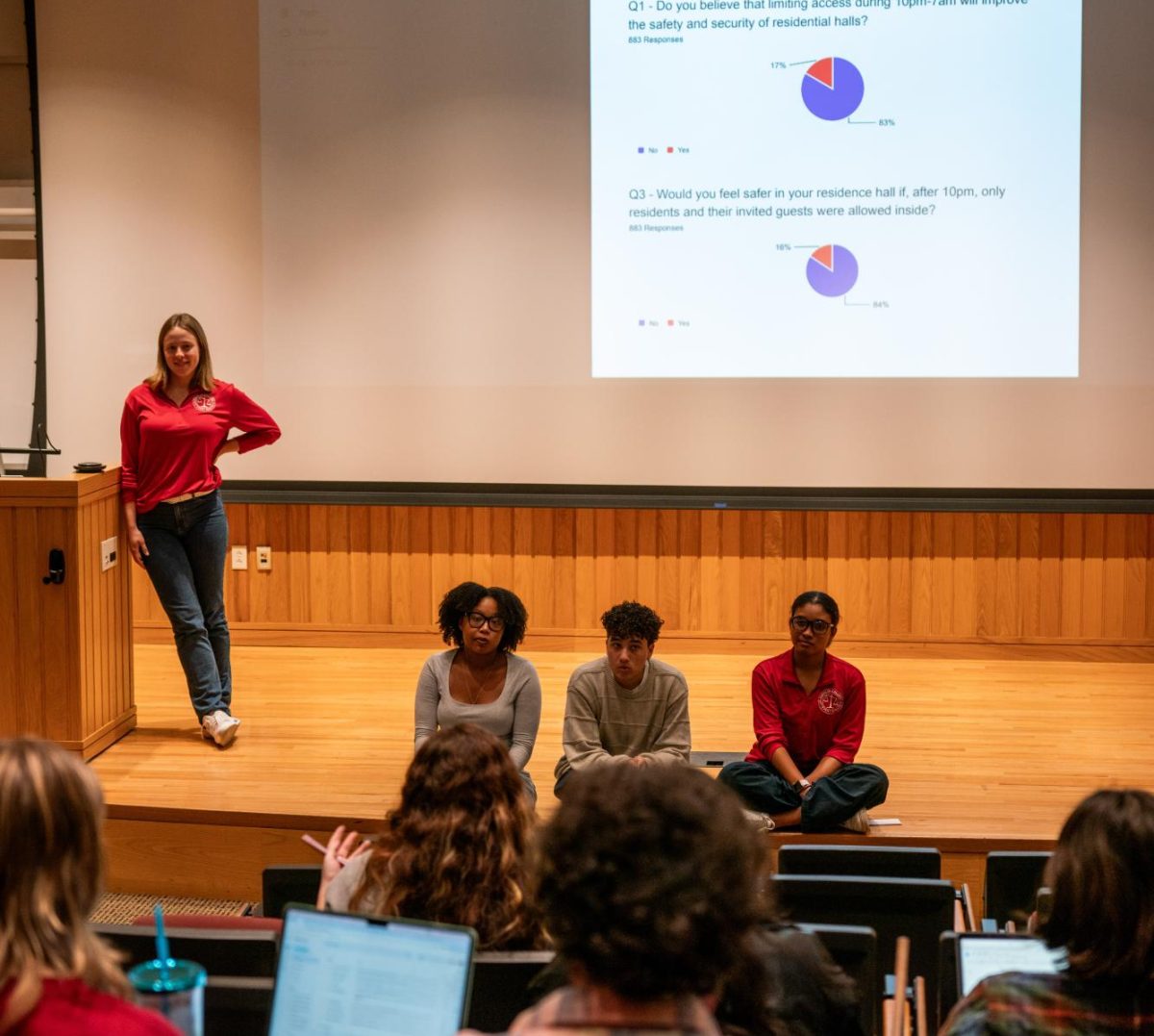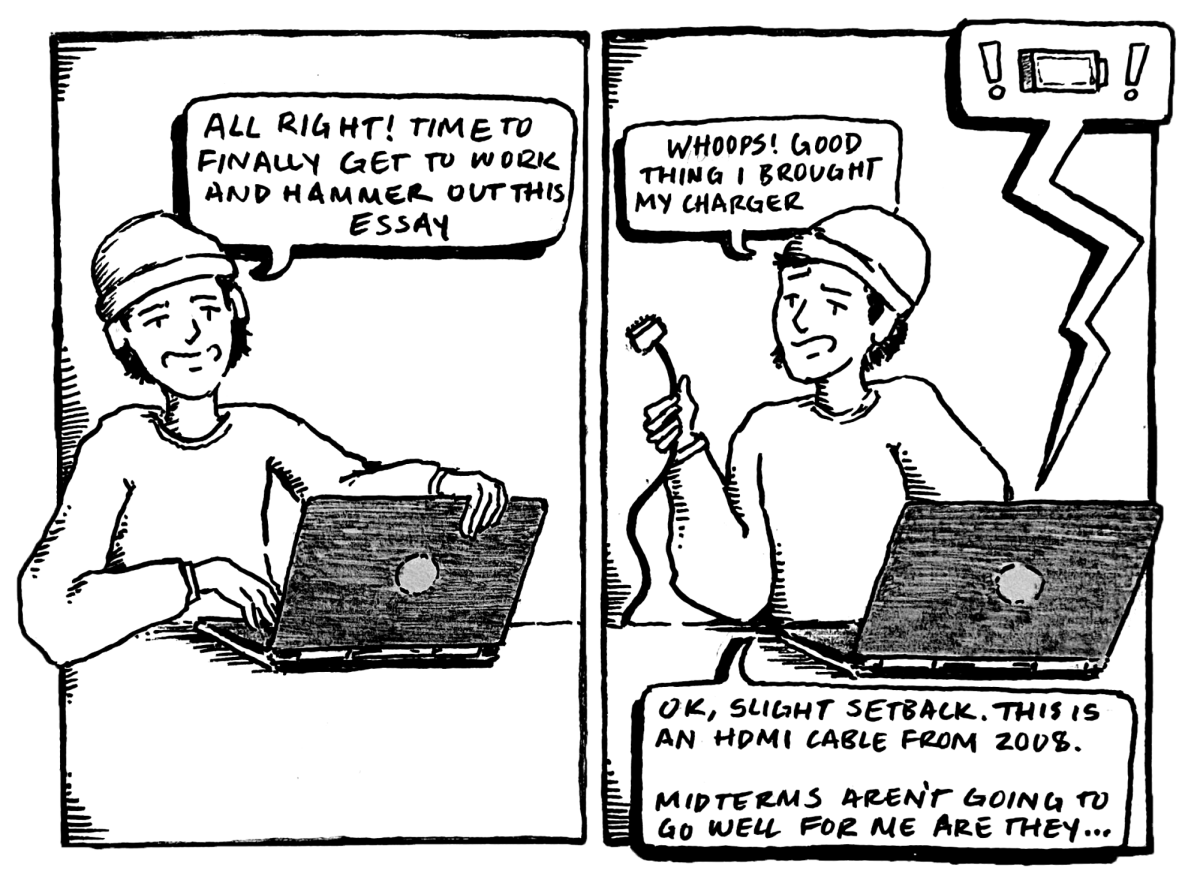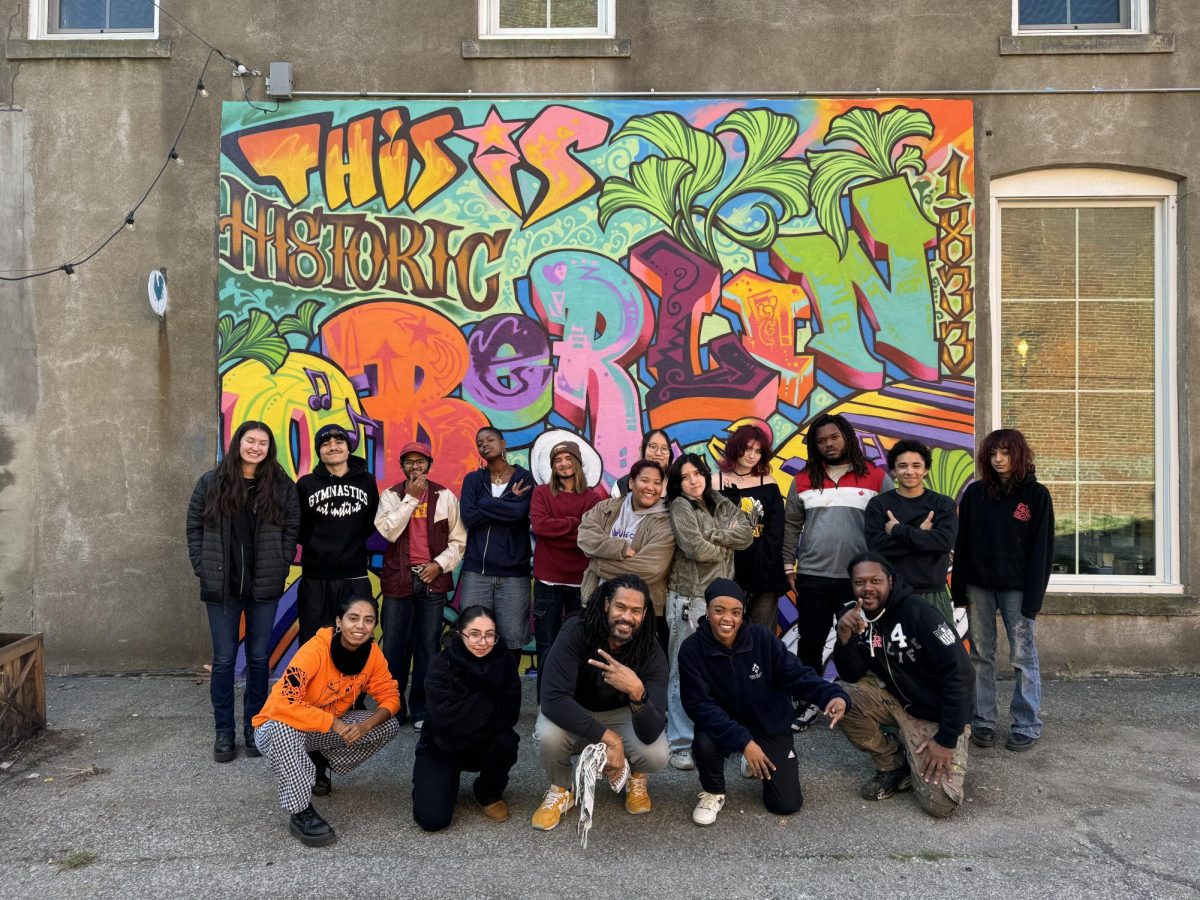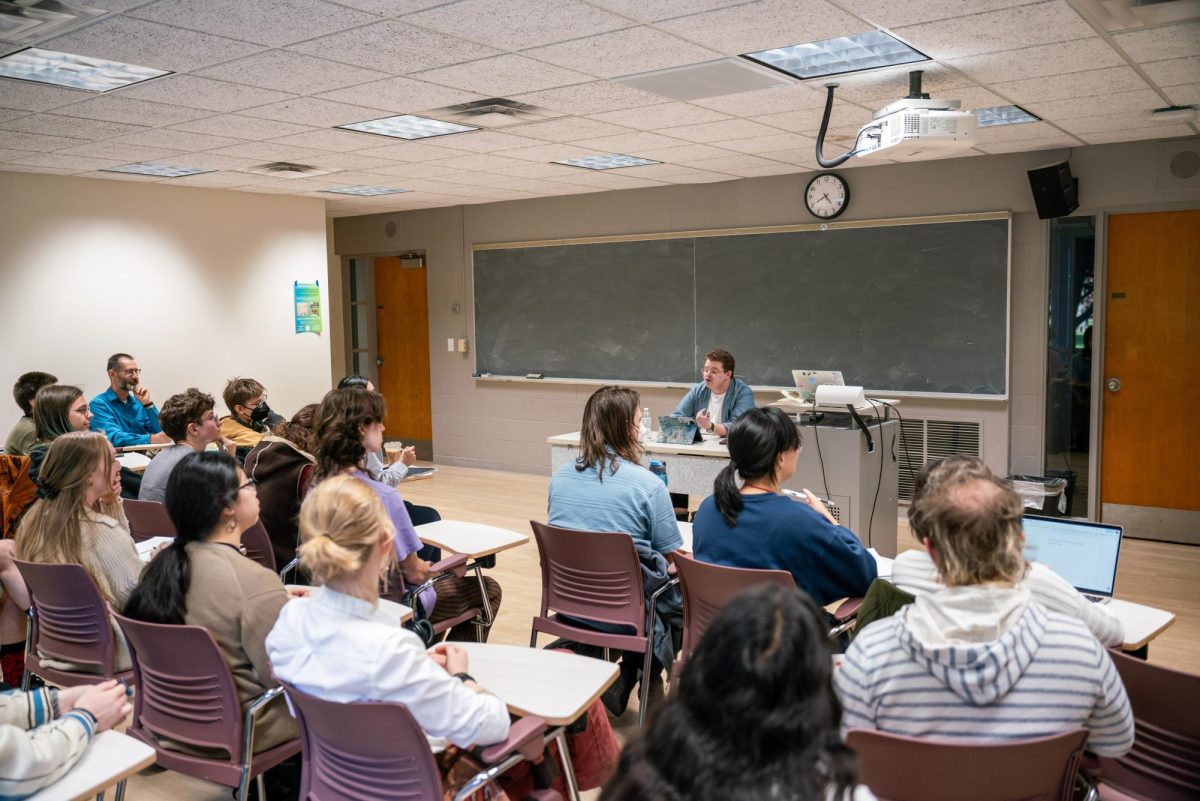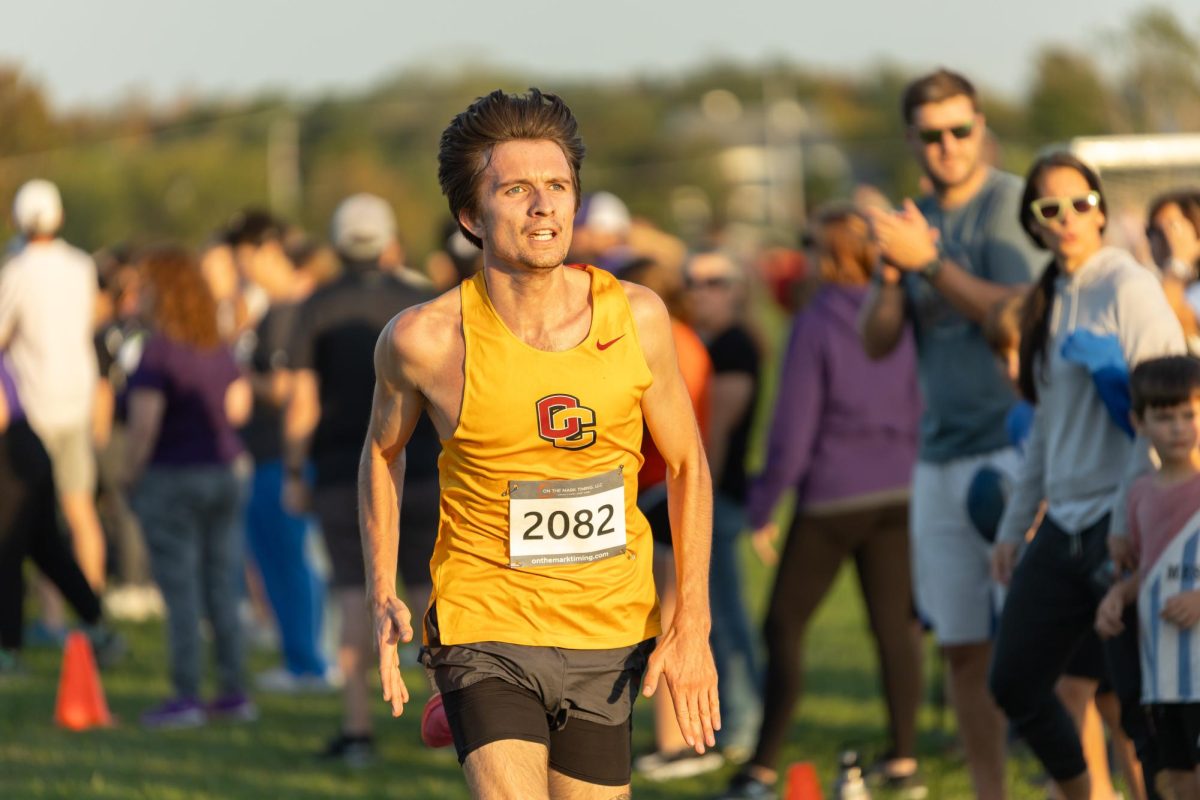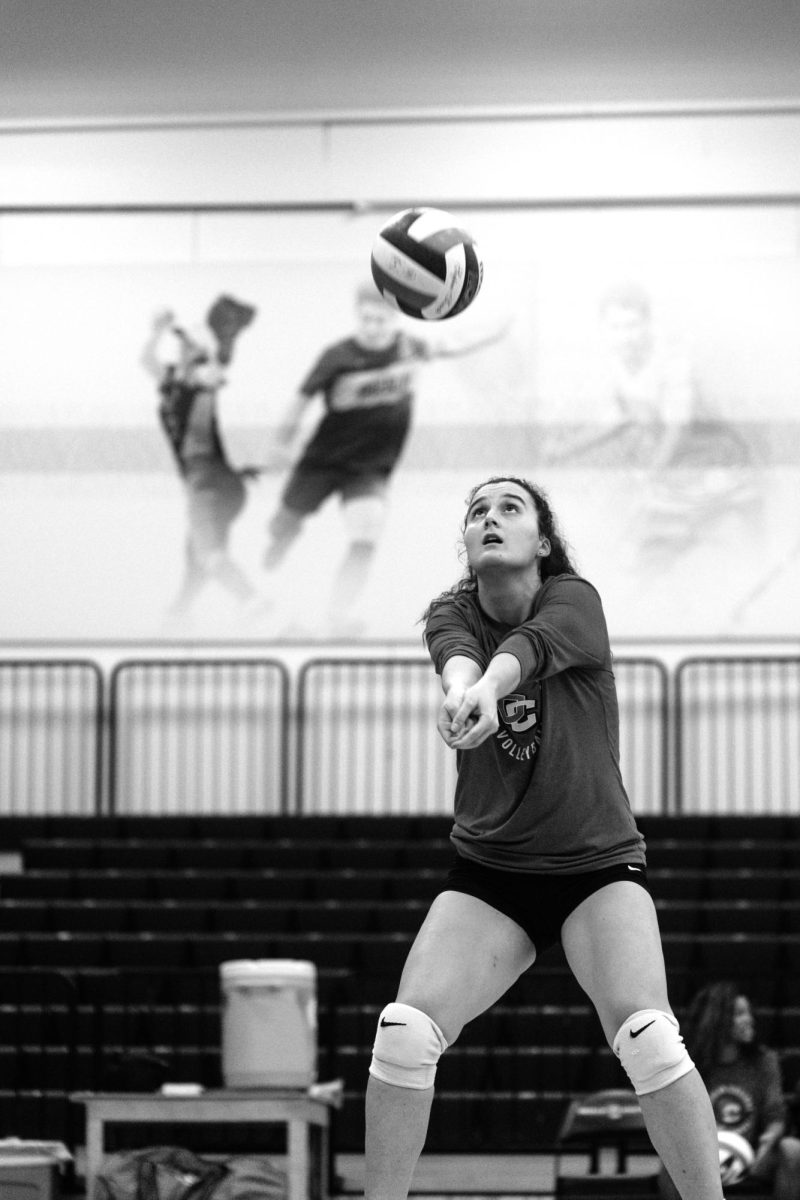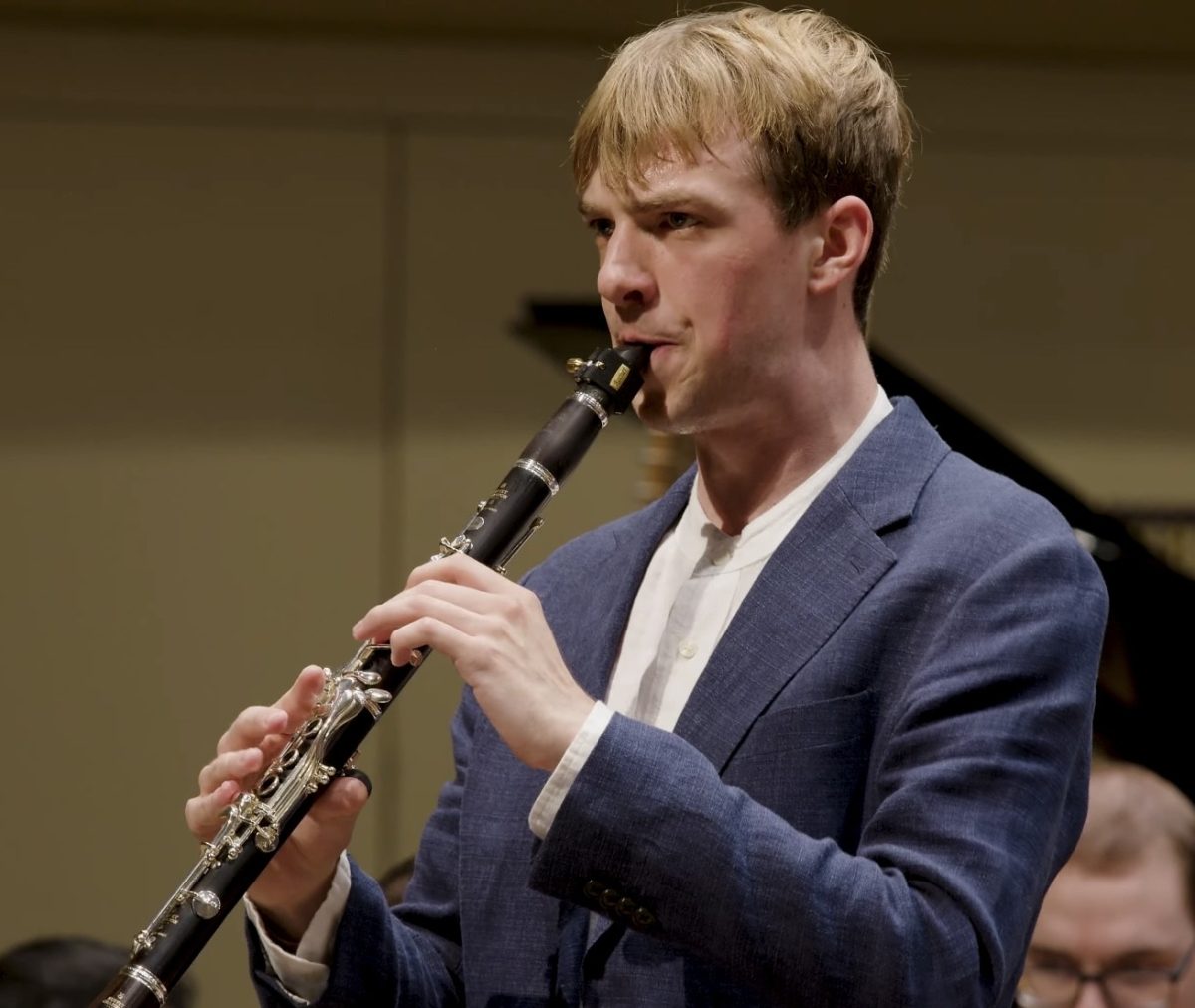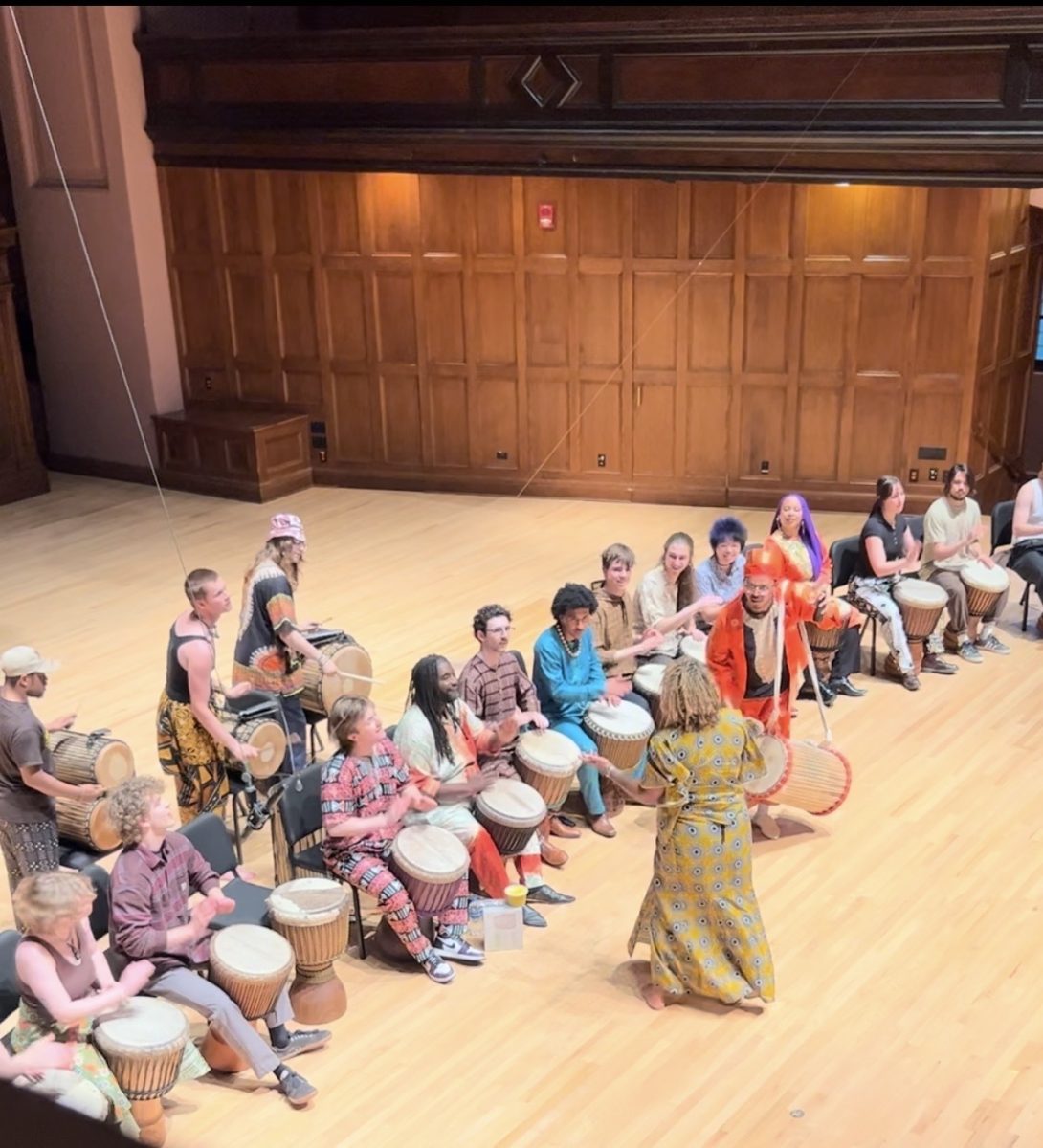Organ Pump Excites Late-Night Audience
Students lie on the stage of Finney Chapel to feel organ vibrations. The first Organ Pump of the semester took place last Friday and graced an unusually large crowd with impressive Organ performances and customary humor.
September 26, 2014
An Oberlin tradition began again on Sept. 19 when a large crowd poured into Finney Chapel for the first Organ Pump of the year. By the start of the show at midnight, the room was packed with a mixture of new and returning students, all waiting expectantly for the debut of the Organ department’s performing cast.
The house lights dimmed and the emcee of the evening, Conservatory sophomore Jay Yau, dressed in a pink trench coat, large sunglasses and heels, stepped on stage to begin the show. Yau’s sarcastic enthusiasm brought the event to life, especially for those who were less knowledgeable about organ performances or classical composers. This Organ Pump did not have a particular theme, but, as is customary, the creepy, decorative skeleton hung in a potted plant off to one side of the stage.
The first work of the program was the finale from Charles-Marie Widor’s second symphony, performed by Conservatory junior Mitchell Miller. His energy gave the evening a lively start and literally caused the room to shake from the vibrations of the Finney organ, granting the audience a taste of what to expect during the finale. The piece finished with thunderous applause — an excellent beginning to the event and the year.
Next, Conservatory senior Richard Gray played 20th-century French organist Jehan Alain’s “Premiere Fantasie.” This piece is strongly reminiscent of a film score in that it tells a story through varying intensities and rhythms, the motifs sounding like dramatic cues. The work begins in a piercingly high register, but quickly mellows to a leisurely stroll before cycling through a number of different character studies, adding color and flavor to the musical narrative.
The third act was the highlight of the evening. Miller returned to the stage, this time performing on the celesta to accompany double-degree junior Christine Jay as she sang selections from the Review Safety and Security reports from the first few weeks of the semester. Jay had a gripping performance style, convincingly portraying a dismayed Safety and Security officer admonishing the audience. Her body language deftly complemented the reports of excessive alcohol consumption, a carbon monoxide detector that needed new batteries, unauthorized parties and a stolen bike. She finished off the list with the Lord’s Prayer, inviting a great deal of laughter; she then outdid herself when she began to sing Sir Mix-a-Lot’s “Baby Got Back” before deciding better of it and gracefully exiting the stage.
Once the crowd settled down, Conservatory sophomore Rees Taylor Roberts performed the fugue from Bach’s Prelude and Fugue in D Major. Roberts put on not only a pleasant listening experience, but also an enjoyable viewing experience. The piece involved some very complex foot manipulation; Roberts looked to be dancing on the pedals of the organ even while seated. At one point, he lifted his hands up as if to say, “Look Ma, no hands,” which drove the crowd wild.
The penultimate piece of the evening was an Organ Pump debut performance from Conservatory first-year Natalie Mealey, who played Simon Preston’s “Alleluyas.” The crowd was very welcoming to the newcomer, and she played music eerily suggestive of a haunted carnival with poise and confidence.
The final work of the program, César Franck’s “Piéce Héroïque,” performed by Yau, was a fantastic way to finish off the concert. Before beginning, Yau invited the audience to come onstage and lazily played the theme song to “Jeopardy!” while the crowd ran in a frenzy to find space to lie down. Yau’s performance provided the floor shaking finish; at first the vibrations were barely noticeable, and the tension in the room built as the crowd waited for the highlight of the Organ Pump experience. The music created the ideal atmosphere for lying still on the stage of the dark chapel, and, as the second half of the piece built in volume and drama, it at last provided the sonic vibrations so traditional to the conclusion of Organ Pump.


